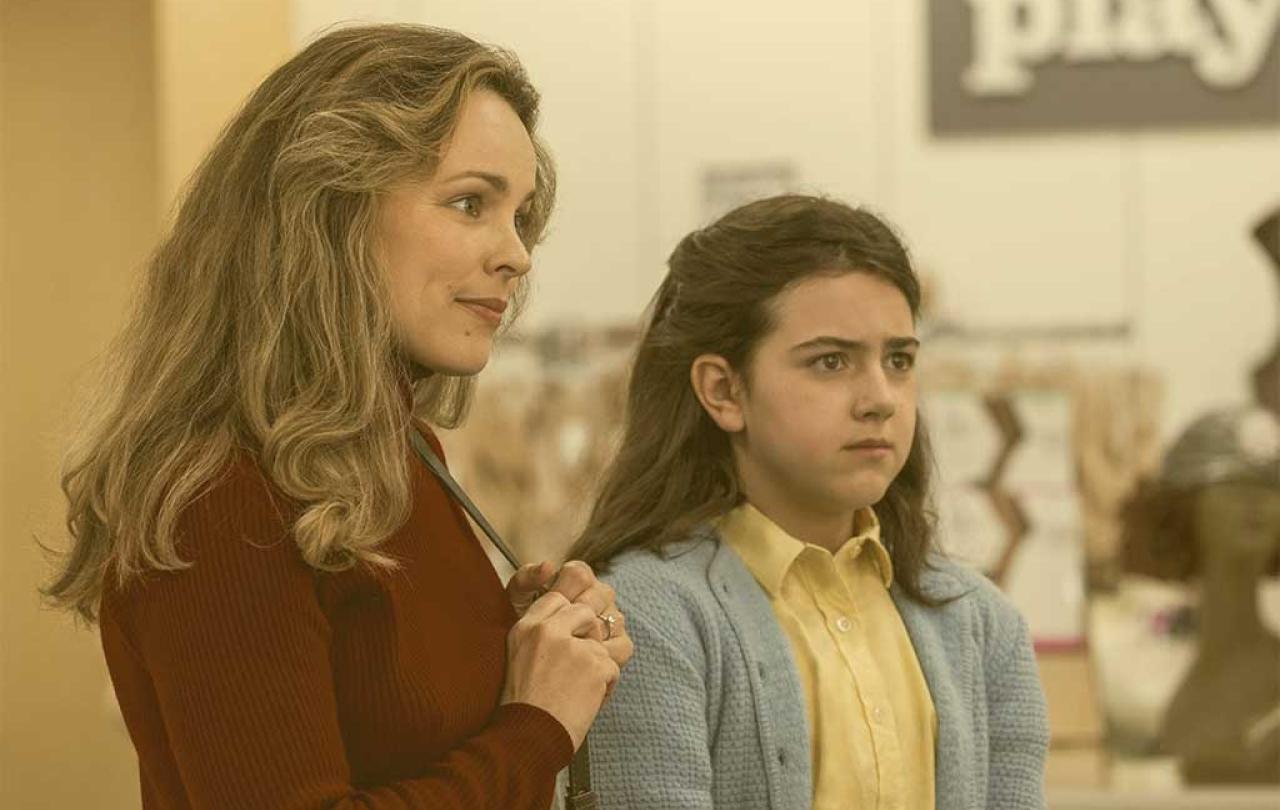
You couldn’t pay me to be an 11-year-old girl again. There is no amount of money that would convince me to re-subject myself to the confusion, self-consciousness and awkwardness of my pre-teen and teenage years. But sitting in the Regents Street Cinema watching a midday screening of the film adaptation of Judy Blume’s popular book Are You There God? It’s Me, Margaret, it was 1999 again. I felt like I was rolling up my school skirt like the older girls and Sam Eavis had just skateboarded past setting my tummy fluttering.
Margaret is a 1970s year-six pupil (Abby Ryder Fortson) who moved from New York City to New Jersey with her mum (Rachel McAdams) and dad (Benny Safdie). As with any 11-year-old, she failed to see the absolute joy in not worrying about romantic relationships, financial hardship and gainful employment. Instead, she strived to grow up as fast as she possibly could. But faced with bad friends, boy trouble, changing hormones and a feuding family, Margret turned to God for guidance as she navigated the complex new stage.
Margret accompanied her milestones with admirably honest prayers to God, asking for guidance, reprieve, support and protection for her family.
Margaret and her friends moved through the usual rites of passage for a schoolgirl in their sprint to maturity. They obsessed about their first kiss with a boy, starting their periods, getting their first bra, being able to fill out the undergarment, gossiping and bitching between friends and desperately trying to fit in. But, unlike me, Margret accompanied her milestones with admirably honest prayers to God, asking for guidance, reprieve, support and protection for her family.
I felt pleased for Margaret. Not because she was navigating these challenges like a pro. She was doing as well as any us (read: poorly). I was pleased for her because she felt comfortable to loop God in. I never prayed about a boy I fancied or petitioned God to start my period. As a teenager, I was convinced the messy practicalities of life didn’t have a place in the Church and I would certainly never bring them up in prayer. I stuck to the simple formula of sorry, thank you and please. All subjects were highly palatable, like my grades at school or family outings.
Angst-riddled Margret however, learned something that I only picked up on years later when I came back to faith at 25; God cares about the details. We can be so caught up in presenting our best to Him that we forget he’s seen it all anyway. We may want a better sex life or bigger boobs or for someone to be attracted to us, but we wouldn’t pray for it. It’s too embarrassing. Not for Margret – from how she was getting on with her friends to the size of her bra, nothing was off limits in her prayers. There’s a lesson there for us.
Margret wasn’t raised in a church or subscribing to any religion. Her mum (a Christian) was shunned by her family when she announced that she would be marrying her dad (a Jew). The subsequent pain meant that they decided to raise their daughter without any religious affiliation and let her choose for herself. When she started her first prayer Margaret opened with:
“I’ve heard a lot of great things about you.”
When she was desperate to be accepted in her peer group she cried out:
“Let me just be normal and regular like everybody else.”
When she felt lonely, she called out and asked God where he was and when she thought he may not exist, even then she took her frustrations to God, crying out in prayer:
“I’ve prayed and prayed and everything just gets worse. Maybe the truth is there’s nobody out there. There’s nobody listening. It’s just me.”
It's the vulnerability, audacity and intentionality of her honesty that takes Margaret leaps and bounds further in her search for faith. That’s a level of transparency with God that I lacked in my youth, and at times in my adult life. The fact that Margaret hadn’t been to church ironically freed her up to approach God in a refreshing, childlike way. She didn’t have any of the pomp and ceremony of religion. Rather she just came to her creator and started talking, like a child to her father.
So, what can we learn from Margaret’s search for God? Several things. Stuffing your bra looks ridiculous. Adolescent friendships are solely fuelled by bravado. The fragility of pubescent womanhood is both a joy and agonising to watch. And we can talk to God anywhere, anytime, in any mood and about anything.
Seems like we don’t need to go back to school to learn a thing or two after all.





